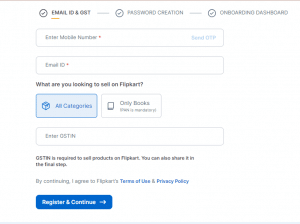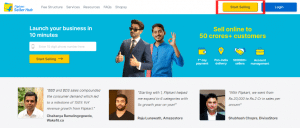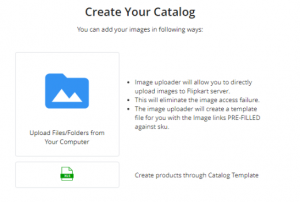A Beginner’s Guide to Selling on Flipkart

Flipkart is one of the largest e-commerce platforms in India, offering a wide range of products across various categories. It provides a convenient and accessible platform for sellers to reach a large customer base.
Selling on Flipkart presents a significant opportunity for businesses to tap into a vast online market.
This article aims to provide a comprehensive guide for individuals and businesses interested in selling on Flipkart. It covers essential information, requirements, and steps to set up a successful seller account.
Who Can Become Flipkart Sellers?
Flipkart welcomes both individuals and registered businesses as sellers on its platform. Whether you are a small-scale entrepreneur or a large company, you can join Flipkart as a seller.
To become a Flipkart seller, you need to fulfill several specific requirements and provide certain documentation. The following list outlines the necessary documents:
- GSTIN (Goods and Services Tax Identification Number): This is a mandatory requirement for all sellers.
- PAN Card: For the “Proprietorship” business type, you need to provide your Personal PAN Card. For the “Company” business type, you need both Personal and Business PAN Cards.
- GSTIN/TIN Number: While not mandatory for all categories, some categories may require this number.
- Bank account and supporting KYC documents: You must have a bank account, and you need to provide supporting KYC (Know Your Customer) documents. These documents typically include address proof and a cancelled cheque.
Is Selling on Flipkart Possible Even if You Live in The US?
Yes. Individuals and businesses based in the US can become sellers on Flipkart. Flipkart provides opportunities for international sellers to expand their reach and cater to the Indian market.
To sell on Flipkart as a seller from the US, you would typically need to fulfill the following requirements:
- Business Registration: You should have a registered business entity in the US, such as a sole proprietorship, partnership, or company.
- GST Registration: Goods and Services Tax (GST) registration is mandatory for selling on Flipkart. However, as a non-resident seller, you may not be required to register for GST. You should consult with a tax advisor or reach out to Flipkart for specific guidance on this requirement.
- Bank Account: You need to have a bank account in the US to receive payments for your sales on Flipkart.
- Legal Documentation: You will be required to submit certain legal documents, including but not limited to:
- Proof of business registration in the US.
- Proof of address for your US business.
- Proof of identity (such as passport or driver's license).
- Bank account details.
- PAN (Permanent Account Number) or TAN (Tax Deduction and Collection Account Number) if applicable.
- Product and Quality Compliance: Ensure that your products comply with the necessary quality and safety standards for the Indian market. You may need to provide relevant certifications or test reports for your products.
- Warehousing and Shipping: You will need to decide whether you want to fulfill orders from your own warehouse or utilize Flipkart's fulfillment services. If you opt for self-fulfillment, you should be prepared to handle shipping and logistics for your products.
- Seller Registration: Visit Flipkart's seller registration page and create an account. Provide the required details, including your business information, product categories, and other necessary information.
How to Set Up a Flipkart Seller Account
Setting up a Flipkart seller account is a straightforward process that allows individuals and businesses to tap into one of India's largest e-commerce platforms.
1. Account registration process
To get started, visit the Flipkart seller registration page and click on the “Start Selling” button.
Fill in the required information, such as your name, email address, and contact details. Create a strong password for your account.
2. Verification and documentation
Once you have registered, Flipkart will initiate a verification process to ensure your legitimacy as a seller. You may be required to submit relevant documents, such as identity proof, address proof, and tax registration certificates. Ensure that you have these documents ready for a smooth verification process.
3. Bank account and tax registration
Next, you need to link your bank account to your Flipkart seller account. This will enable smooth payment settlements. Additionally, you may need to register for tax purposes, depending on your country's regulations. Provide the necessary tax-related details and complete the registration process.
Pros and Cons of Selling on Flipkart
Flipkart offers a vast customer base, extensive marketing opportunities, and a user-friendly platform. However, challenges such as intense competition, high commission fees, and stringent seller policies should be carefully evaluated before making a decision.
Pros
- Wide customer base
- Brand recognition
- Access to Flipkart's logistics network
- Marketing and promotional opportunities
- Easy setup and registration process
Cons
- High competition
- High commission fees
- Product returns and refunds
- Limited control over product pricing
- Reliance on Flipkart's platform for sales
When selling on Flipkart, sellers have limited control over product pricing as the platform imposes certain pricing guidelines and policies. Sellers need to adhere to the marketplace's pricing structure, which can impact profit margins and the ability to competitively price products. This limitation can affect a seller's flexibility in adjusting prices according to market conditions or individual business strategies.
Tips for Success as a Flipkart Seller
From optimizing product listings to building customer relationships, here are the tips and strategies to enhance your presence on Flipkart and achieve long-term success.
Product Listing and Catalog Management
- Adding products to the catalog
Once your seller account is set up, you can start adding products to your catalog. Provide accurate and detailed information about each product, including titles, descriptions, images, and specifications. Ensure that your listings comply with Flipkart's guidelines to enhance visibility and sales.
- Optimizing product descriptions and images
To attract customers, optimize your product descriptions and images. Use relevant keywords, highlight key features, and provide clear and high-quality images. This will help customers understand your products better and increase the chances of conversion.
Pricing and Inventory Management
Effective inventory management ensures that businesses can meet customer demands while minimizing carrying costs, reducing stockouts, and maximizing overall profitability. It entails analyzing market trends, competitor pricing, and maintaining appropriate stock levels for effective business operations.
- Pricing strategies on Flipkart
For Flipkart sellers, utilize the “SmartPricing” tool that suggests optimal prices based on market trends and competition. Additionally, consider using “Flipkart's Seller Hub” to track sales, analyze performance, and access valuable insights for effective pricing strategies and decision-making.
- Stocking and managing inventory
Efficient inventory management is crucial to ensure smooth operations. Keep track of your inventory levels and update them regularly on Flipkart's seller portal. This will help prevent stockouts or overselling. Consider utilizing Flipkart's fulfillment services, such as Flipkart Fulfillment or third-party logistics providers, to streamline your inventory management process.
Customer service
Flipkart sellers can contact buyers through the platform's messaging system, order management system, and customer support. These communication channels allow sellers to address queries, provide updates, and resolve concerns, ensuring a smooth buying experience and maintaining a positive relationship with buyers.

Promotional Tools and Advertising
Flipkart provides a range of advertisement tools to sellers, enabling them to enhance their visibility and increase sales. These tools can be effectively utilized to promote products and reach a wider audience. Some of the available advertisement options include sponsored ads, flash sales, and various marketing campaigns. By leveraging these tools, sellers can effectively measure the impact of their promotional strategies using analytics tools and refine them for optimal results.

Conclusion
Selling on Flipkart holds immense potential for entrepreneurs and businesses looking to expand their reach in the e-commerce market. With its large customer base, reliable infrastructure, and seller-friendly policies, Flipkart offers a platform where sellers can thrive and achieve their business goals.
Do you think sellers not based in India can do well on Flipkart? Leave your comments below.






